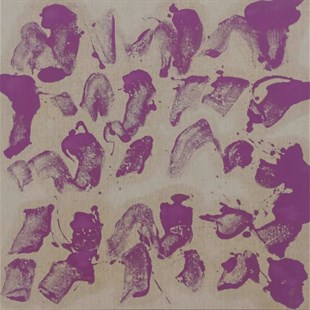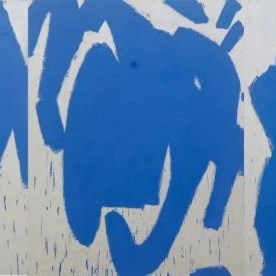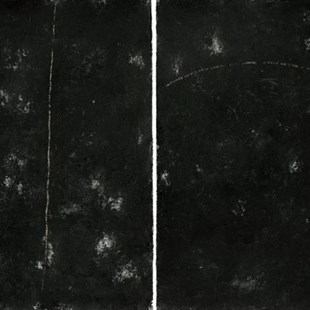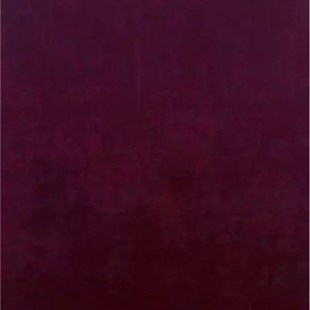
As one of the key early members of No Name Group, a circle of underground Chinese artists active between the 1960s and 1980s, Ma Kelu is a crucial practitioner during the current of “Return Art to Ontology” in the end of the 1970s. Afterwards, his experience in the United States further brought profoundness, richness and broadness to his art practice. Centering on the generation and development of his abstractionist style, the solo exhibition selects over 20 representative works of Ma over his practice of three decades, and thereby visualizes the theme of this exhibition.
Preface
Text / Wang Jiang
“The attraction from the unknowable in painting, the attraction inartistic emotions, the curiosity about the possibility of free generation ofpaintings and the resulting attraction, and the attraction from the paintings free from meaning, interpretation, responsibilities, established artisticcriteria, and Western-Oriental controversy but with the protection forindividualism and returning to romance. All the above factors pushed me tore-start. Today, I saw the potential, the energy, and the toleration from the probable freedom of my future adventure. Thus my realism was once again defeated by myself, by the romantic radicalism of art and the conservatism of forms, and by the resolution over four decades.”
The above words come from Ma’s self-statement, resulting from his affection for over four decades’art experience. These words perfectly embody the artist’s feelings and understanding for art, worth savoring over and over again, during which his pride and resolution reveal themselves between lines. The attraction of painting described by Ma is from the biunique correlation between artists and their arts. In the correlation, the art features a kind of absoluteself-sufficiency with the mystery of agnosticism. Far beyond secularizedcultural perception and missions, this kind of correlation described here representsthe covert relevance between individuals and sacredness. Indeed, in this artist’s view, the assemblage of these attractions gives art a kind of“transcendency”. The transcendency was such that the artist decided tore-enliven himself and take up a brand-new adventure. In the second half of his self-ststement, this artist expresses his strong affection with a type of bolderrhetoric of antiphrasis, which makes the confession of his failure in realismmore like a declaration of another kind of victory. Therefore, one could realizewhat he pursues devoutly is the opposite of realism and an end to his past experience.
By beginning the exhibition with Ma’s self-statement the aim is to providea time reference for the investigation into this artist’s practice of abstractionism. It is like the null point in the time axis, symbolizing the artist’s introspection at a critical point that connects his past and present. At thefarthest point from the null, we can figure out the artist’s path ofabstractionism that started from the early 1980s. The alienation of No Name Group from official aesthetic systems gradually developed into the aesthetic self-awareness of abstractionism by learning from impressionism. During that period, Ma’s abstractionist paintings were like a resonance with American abstractexpressionism, traditional Chinese ink painting, and Oriental philosophies. He paidmore attention to brushwork, stokes, concise structures, and the real-timesense of unfinishedness. In the social and political context at that time, this kind of exploration towards the ontology of painting embodied the distinctive ideologies of avant-garde and independence. In the late 1980s, Ma traveled to New York from Europe. After visiting numerous classical paintings in the west, drivenby a kind of metaphysical spiritual power, he quitted his former ways of creation with stronger emotions and images, and then turned to abstractpainting highlighting reason and profoundness. After 1989, impacted by the fierce political turmoil in China, Ma finished 13 paintings in crimson as amanifestation of his prolonged depression when he was studying in the US. Thematrix-like presentation with solemnness signifies the memory of that tragedy, as well as the record of individual psychological course. Observing the surfaceof these paintings at a close range, visitors would find that the overlappedstrokes of the artist symbolize the flesh without pulse, and would sense the strong gloom behind these silent, blood-like crimson colors. The way of creationby telling personal life experience was then gradually employed in his laterworks. By the beginning of the 21st century, Ma accomplished massive autobiographic creations of abstractionism inspired by his own destiny. When itcomes to the period near now, namely the other side from the null point, theappearance and development of Ada series declares the artist’s brand-newcreation experiment. Through this series, he tried to re-define painting bytotally removing the narratives, meaning, completeness, and typical techniquesin his former works as a method of moving towards “abiogeny, meaninglessness,neither Oriental nor western, and naturally-born principles”. The title Adacame from the suggestion of his friend, and Ma recognizes this name because “itlies between meaningfulness and meaninglessness. It represents a state of beingpoised, but also a state of acting without thinking”. Thus, it is easy to tellthat this series was heavily influenced by the Chinese aesthetics deep in hismind, and the feature of graphology lifted his creations to a new level. Accordingly,his recent triad consisting of Blue Bones and Crazy Streets allfeature a large size of monumentality. Despite the abiogenetic and casualtitles, he seems to be adjusting the correspondence between his graphologicaland psychological space continuously, and these paintings present a strongsense of mystery and visual power.
The linguistic autobiography parallel to the artist’s subjectivity alsorepresents the autobiography of his works, and of the exhibition itself. In themeantime, these creations are having covert and biunique communications with audience. The metaphor about the autobiography of works is just the personification, and what lies behind the rhetoric is the critical thinking of “significance toaudience” over “significance to the creator”. Maybe any attempts to decodeabstractionist arts are manifesting the openness in the connotation of arts, and there is no hegemony from artists subjectivity at all. This exhibition itself, as the field of these self-statements, is also narrating its overall meaningfulness. This solo exhibition and the statement you are reading bothattempt to help audience better perceive the unique value and working system of this artist’s creation, and then to comprehend the dualism and bi-directionalconversion between his logics and contradictions. The triple significance ofthe artist, creations, and exhibition, by interpenetration and acting as eachother’s interpretation, provides the different perspectives of SELF-STATEMENT.
About the exhibition
Dates: Sep 27, 2019 – Nov 10, 2019
Opening: Sep 27, 2019, 15:30
Venue: Platform China Contemporary Art Institute
Courtesy of Platform China Contemporary Art Institute, for further information please visit www.platformchina.cn.



































